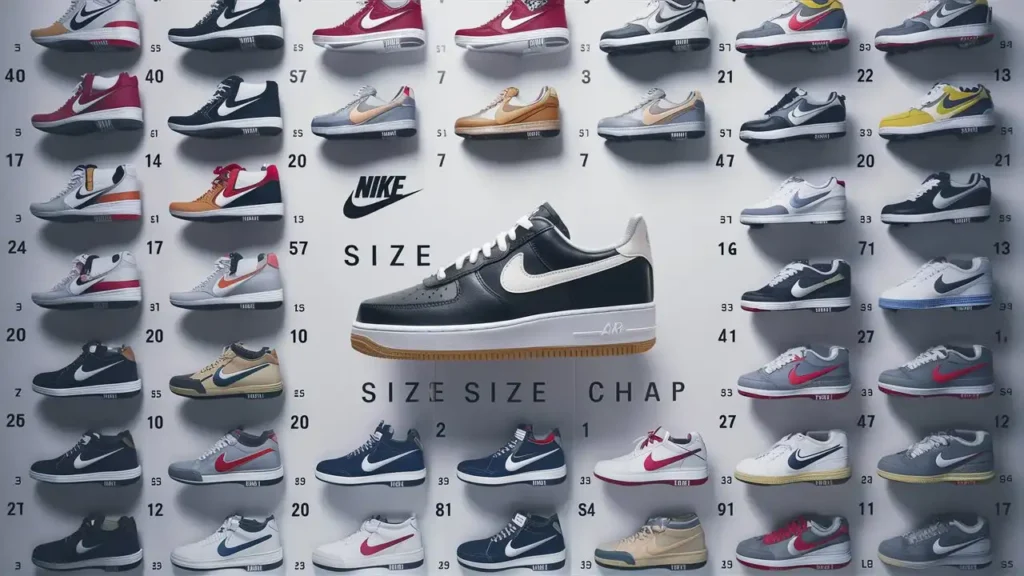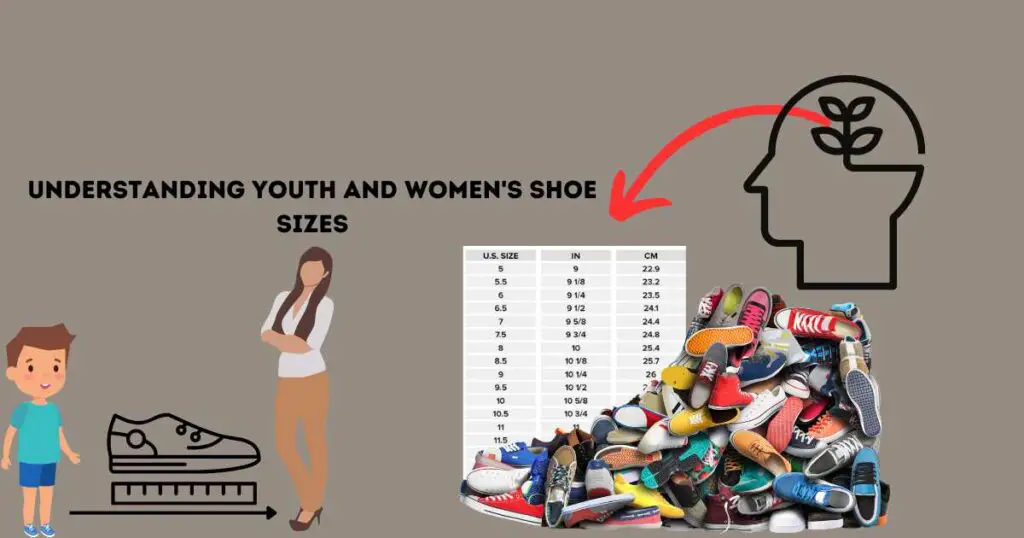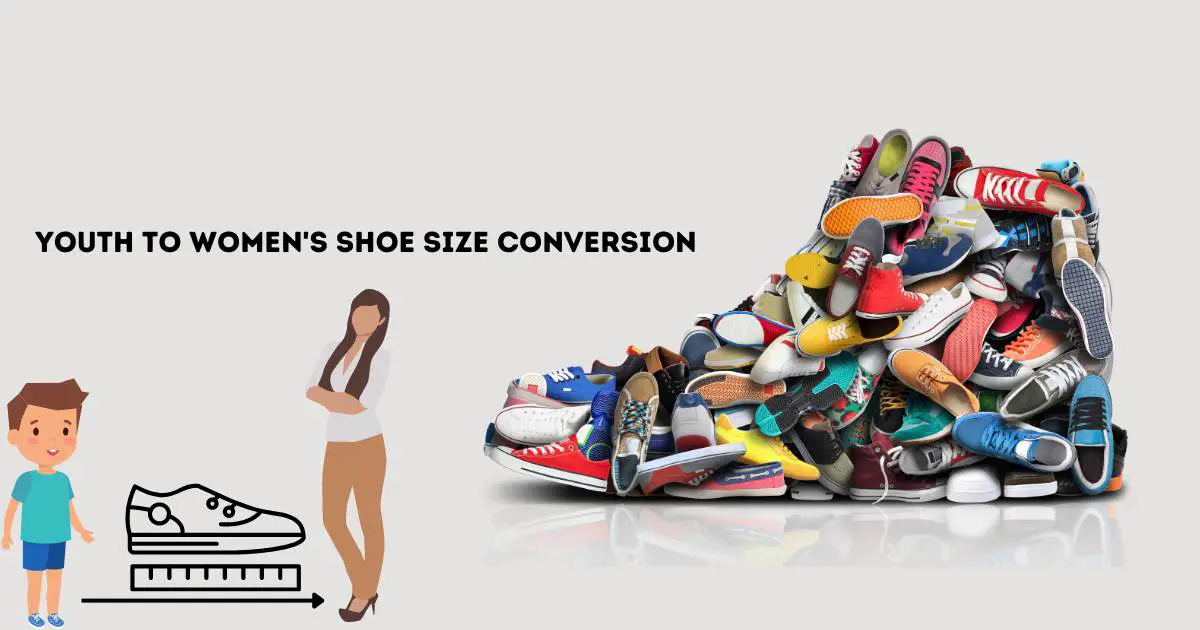Have you ever wondered how to convert youth shoe sizes to women’s sizes? It’s simpler than you might think! In most cases, you just need to subtract 1.5 from the youth size to get the equivalent women’s size. Through my research and experience, I’ve found this conversion to be a helpful trick for parents and young shoppers alike. Understanding this conversion can save time and frustration when shopping for shoes, ensuring a better fit and avoiding the hassle of returns. So, if you’ve ever been confused about youth to women’s shoe size conversion, keep reading to learn all you need to know!
Converting Youth TConverting Youth To Women’s Shoe Sizes
Welcome to the practical world of shoe size conversions! Moving from youth to women’s sizes often requires a bit of math, but don’t worry—it’s simpler than it sounds. This guide will walk you through the key steps to convert youth sizes into women’s sizes, helping you find a perfect fit every time. Ready? Let’s dive in!
Conversion Formulas and Examples
The most commonly accepted guideline for going from youth to women’s sizes is:
Women’s shoe size = Youth shoe size + 1.5 (sometimes +2)
- If your youth size is 4, you’d convert to a women’s 5.5 (by adding 1.5) or 6 (by adding 2 for a slightly roomier fit).
- If your youth size is 5, you’d convert to a women’s 6.5 or 7.
Because brands vary, adding 2 instead of 1.5 can help if your feet are wide or the brand is known to run small. However, it’s always wise to try on the shoes if you can.
Size Comparison Charts By Age and Gender
Size charts can be incredibly helpful when converting shoe sizes. They show corresponding sizes across age groups and genders. Below is a simplified table to illustrate approximate conversions:
| Age | Gender | Youth Size (US) | Women’s Size (US) |
|---|---|---|---|
| 10–12 | Children | 4–5 | 5.5–7 |
| 12+ | Teens | 5–7 | 6.5–8.5 |
| 5–8 | Children | 1–3 | 3.5–5 |
| 8–10 | Children | 3.5–4 | 5.5–6 |
Use this chart as a starting point. Youth sizes change as feet grow, so always measure and compare with brand‐specific information.
Methods For Converting Shoe Sizes
Converting from youth to women’s shoes may seem tricky at first, but there are several reliable methods. Whether you prefer charts, quick math, or trying shoes on, these approaches help ensure a comfortable, accurate fit.
- Using Conversion Charts
- The simplest way to find your women’s size from youth sizing is by looking at a chart. It displays corresponding sizes, making the conversion process straightforward.
- Example of a mini chart:Youth Size (US)Women’s Size (US)45.5 or 656.5 or 767.5 or 8
- Mathematical Calculations
- You can convert youth sizes to women’s using a quick formula:Women’s size = Youth size + 1.5 (or +2).
- For instance, a youth size 4 translates to roughly 5.5 or 6 in women’s. This is an estimate and may differ by brand, so be sure to double‐check.
- Trying On Shoes
- The most reliable way to guarantee a good fit is by testing the shoes in person.
- Walk around in them for a bit to see if you have enough wiggle room in the toe box and if the heel feels snug.
- It’s also smart to try shoes in the afternoon, as feet can swell slightly throughout the day.
Additional Tips for a Perfect Fit
- Measure Both Feet
- It’s common for one foot to be slightly larger. Always use the larger foot to guide your size choice.
- Consider Brand Differences
- High‐quality brands often fit more consistently, but sizing can still vary. Check each brand’s official conversion chart if possible.
- Width Matters
- If you have wider feet, you may want to opt for the half‐size up or consider the “+2” approach instead of “+1.5.”
- Break Them In
- Even the right size shoe can feel stiff at first. Walk around at home to ensure you’re comfortable before wearing them out.
Correcting the “Subtract 1.5” Misconception
You may have heard, “Just subtract 1.5 from the youth size to find the women’s size.” However, the more straightforward way is to add 1.5 to the youth size to arrive at the equivalent women’s size. In other words, going from youth to women’s is:
Youth size + 1.5 = Women’s size
(Some charts express it in reverse: Women’s size − 1.5 = Youth size. That is mathematically the same idea, but reversed. Always check the direction of your conversion!)
Sure, here’s the Nike shoe size conversion chart in a mobile-friendly format with modified headers:
Nike Shoe Size Conversion Chart

Big Kids (1Y – 7Y)
| Kids’ Size (US) | Women’s Size (US) |
|---|---|
| 1Y | 2.5 |
| 1.5Y | 3 |
| 2Y | 3.5 |
| 2.5Y | 4 |
| 3Y | 4.5 |
| 3.5Y | 5 |
| 4Y | 5.5 |
| 4.5Y | 6 |
| 5Y | 6.5 |
| 5.5Y | 7 |
| 6Y | 7.5 |
| 6.5Y | 8 |
| 7Y | 8.5 |
Little Kids (8C – 3Y)
| Kids’ Size (US) | Women’s Size (US) |
|---|---|
| 8C | 9 |
| 9C | 10 |
| 10C | 11 |
| 10.5C | 11.5 |
| 11C | 12 |
| 11.5C | 12.5 |
| 12C | 13 |
| 12.5C | 13.5 |
| 13C | 14 |
| 13.5C | 14.5 |
| 1Y | 2.5 |
| 1.5Y | 3 |
| 2Y | 3.5 |
| 2.5Y | 4 |
| 3Y | 4.5 |
Babies & Toddlers (1C – 10C)
| Kids’ Size (US) | Women’s Size (US) |
|---|---|
| 1C | – |
| 2C | – |
| 3C | – |
| 4C | – |
| 5C | – |
| 6C | – |
| 7C | – |
| 8C | 9 |
| 9C | 10 |
| 10C | 11 |
Why Youth To Women’s Shoe Size Conversion Is Important
Finding the perfect shoe fit is crucial, and youth to women’s shoe size conversion is no exception. This conversion helps many shoppers get the right fit, especially when browsing shoes across different age categories. Understanding the importance of accurate shoe size conversion ensures comfort and avoids the hassle of returns.

Understanding The Difference In Sizing Systems
Shoe sizes for kids and adults differ significantly. Youth sizes, labeled as ‘Y’, are for older children. Women’s sizes are typically larger and wider. Converting youth to women’s sizes requires knowing the starting point in the youth range to match the corresponding women’s shoe size.
Making Accurate Purchases
An accurate conversion leads to successful shopping experiences. Measure your foot regularly to keep up with any changes. Many brands offer size charts; use these as a guide. When shopping online or in-store, check if the retailer uses U.S., U.K., or E.U. sizing systems to ensure a correct match.
- Compare length: Measure the foot in inches or centimeters, then consult a size chart.
- Gender-specific design: Consider the shoe cut and how it might fit based on gendered styling.
Factors To Consider Shoe Size Conversion
Understanding the right shoe size ensures comfort and prevents foot problems. Converting youth to women’s shoe sizes involves more than a simple numerical adjustment. It requires considering different factors. Let’s explore some key elements to keep in mind during this conversion process.
Age And Developmental Changes
Kids’ feet grow quickly. This is a pivotal aspect to remember when shopping. Regular measurement of a child’s feet is crucial. It ensures a precise fit. This is especially true during growth spurts
Manufacturer Variations
Not all brands size their shoes the same way. A shoe might fit differently across different labels. Thus, pay attention to specific brand sizing guides. Always cross-check the brand’s conversion chart before making a purchase.
Foot Width And Shape
Shoe fit is not solely about length. Foot width and shape greatly affect comfort. Some youth sizes might be narrower than women’s sizes. Therefore, consider the width of the shoe. Always choose a shoe that complements the natural shape of the foot.
Remember these factors to find the best fit in youth to women’s shoe conversion. They ensure a comfortable and healthy choice for growing feet.
Tips For A Successful Conversion
Finding the perfect fit is key when switching from youth to women’s shoe sizes. This conversion can be tricky, but with the right tips, you will nail it every time. Let’s dive into the essential steps for a successful youth to women’s shoe size conversion.
Getting Proper Measurements
To start, measure your feet accurately. Use a standard ruler or a shoe chart, and make sure to measure both feet at the end of the day. This ensures that your feet are at their largest, giving the most reliable size for shopping. Note down these measurements; they are crucial for finding that perfect fit.
Considering Half Sizes
Always remember, half sizes matter! Conversion between youth and women’s sizes sometimes requires you to look at half sizes for a better fit. Not all shoes come in half sizes, but when they do, they can make all the difference between comfort and discomfort.
Researching Brand Sizing
Size can vary from brand to brand. Before making a purchase, check out the brand’s sizing chart online. Compare your measurements with their chart to find the best match. This helps to avoid that pesky return process due to a poor fit.
| Youth Size | Women’s Size |
|---|---|
| 3.5 | 5.0 |
| 4.0 | 5.5 |
| 4.5 | 6.0 |
| 5.0 | 6.5 |
Seeking Assistance From Professionals
If in doubt, seek out a professional. Shoe store associates are trained to help with size conversion and finding the right fit. This personal touch can make a huge difference and they can provide additional tips on shoe care and comfort. Do not hesitate to ask for help.
Remember these key points and step into your new shoes with confidence.
Conclusion
Converting youth to women’s shoe sizes doesn’t have to be complicated:
- Use the Formula: Women’s size ≈ Youth size + 1.5 (or up to +2 if needed).
- Reference Charts: These give you at‐a‐glance conversions and help confirm which size to try.
- Try on Shoes: When possible, test the fit in person to account for brand variations and personal comfort.
With these easy steps, you’ll be ready to find the perfect pair of women’s shoes based on your current youth size. Happy shopping!
o1
Frequently Asked Question
Youth shoe sizes are generally two sizes smaller than women’s. Simply add two to the youth size to find the equivalent women’s size.
Youth sizes run smaller and are designed with a wider fit compared to women’s sizes, which are often narrower and tailored for adult feet.
Yes, adults with smaller feet can wear youth-sized shoes by choosing sizes that are comparable to their adult shoe size, typically two sizes smaller.


